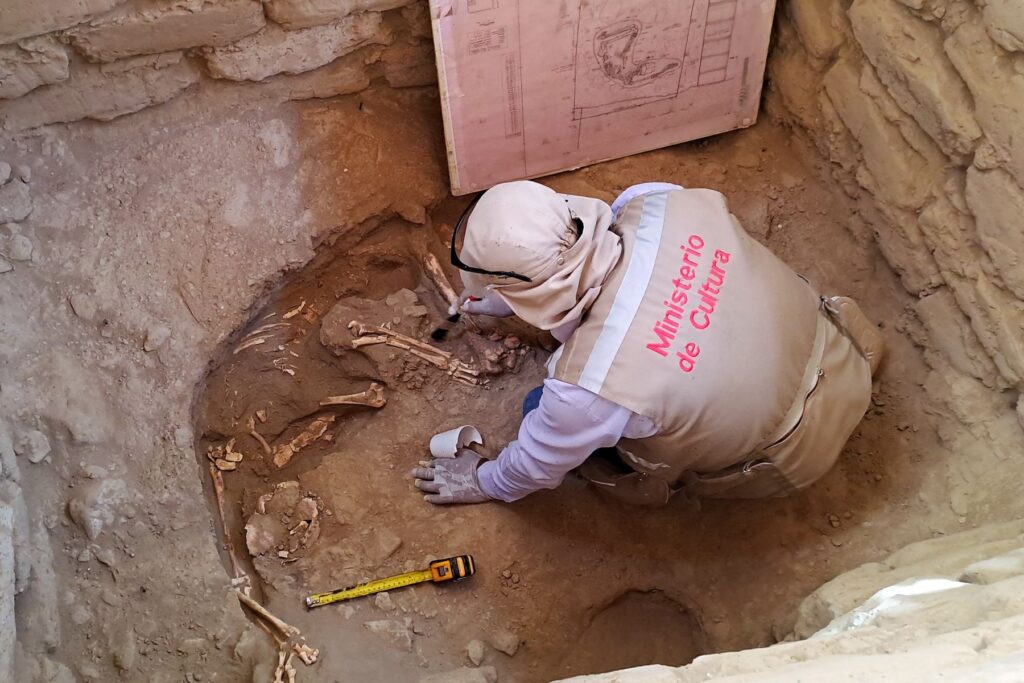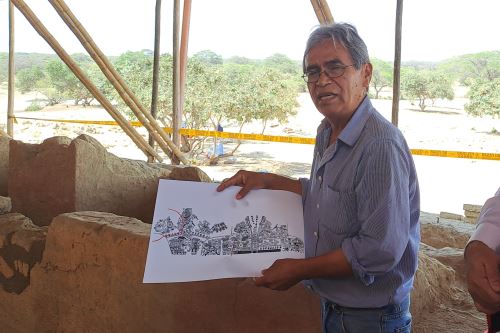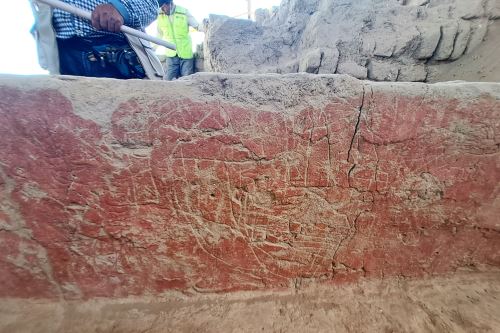Possible Funerary Structures Uncovered at Peru’s Huaca Bandera

Culture Ministry’s researchers digging at Huaca Bandera —located in the district of Pacora in Lambayeque region— have found architectural structures of the Mochica elite, as well as human remains linked to important ancestral iconography.
The head of the Decentralized Culture Directorate (DDC) in Lambayeque, Julio Fernandez, reported that a new investment phase of the project ‘Recovery of Walled Complex 2 in the Central Sector of Archaeological Complex Huaca Bandera’ was successfully completed for S/624,921 (about US$163,335).
These resources created 95 jobs for professional and working-class people, mostly people from the aforementioned Lambayeque’s district.
According to Fernandez, the work at Huaca Bandera included archaeological research studies —both field and desktop— preventive conservation practices, archaeometry research, and dating using radiocarbon techniques.

Walled Complex
Archaeologist Manuel Curo, the project’s director, commented that at this stage the team continued to study Walled Complex 2 —one of the areas used by ruling elites in the lower valley of La Leche-Motupe in 850 B.C. during the transition from the Mochica to Lambayeque periods.
Moreover, the specialist explained that it has been possible to document the design of the pyramidal platform at Walled Complex 2 and its main architectural elements, particularly those found in its upper platform.
“Here, we have found a red and cream-colored ceremonial bench, a wall pierced with rows of niches —with the same colors— in reverse order, and a burial place located in the central part of these structures,” he noted.

These elements were also present in a Mochica vessel, whose iconography consists of a burial ceremony for an elite person, in a coffin that is placed into a grave by means of ropes, led by two mythological figures.
The scene takes place in settings similar to those of Huaca Bandera.
Thus, the researchers believe that this could confirm that said structures were a symbol of power, as they would be the environments where Huaca Bandera leaders operated, as well as the place where they met death.
